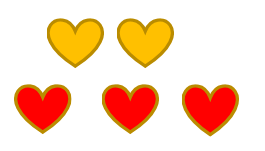Here are some different types of subtraction and ways tutors can use them.
Take-Away
For example, you have 6 objects, remove (or take away) 2 of the objects and you have how many objects left? 6 take away 2 is ______
Additive
How much must be added to what I already have to obtain a certain amount?
For example, Cindy has 3 stamps but needs a total of 5 stamps to mail her letters. Focus on what is needed. 3 + ___ = 5, or I have 3 stamps I need 2 more stamps to have 5 stamps. Seems like an addition problem but another way of looking at it, is: I need 5 stamps and I have 3, how many more do I need? 5 – 3 = 2.
Comparative
For example, Tommy has 6 stars that glow in the dark. Latisha has 2 stars that glow in the dark. Who has more? How many more?

Compare how many stars Tommy has with how many stars Latisha has, then you can answer the questions.
Who has more? _________________
How many more? ____
In other words, Tommy has more, 6 – 2 = 4 (count the stars that do not have a match)
Partitioning
This type of subtraction involves separating or partitioning a set of objects into parts. This type of problem is easier if you can draw the items or a diagram.
 For example, Astrid has 5 hearts cut out for her project. The hearts are yellow and red. Astrid has 2 hearts. How many red hearts are there?
For example, Astrid has 5 hearts cut out for her project. The hearts are yellow and red. Astrid has 2 hearts. How many red hearts are there?
Set the cards up as sets, or organize the hearts by color, then answer the question:
5 – 2 = ____
Incremental![]() This type involves a decrease. All measurements require this type of subtraction.
This type involves a decrease. All measurements require this type of subtraction.
For example, when you measure a tower by blocks. You want the tower to be 6 blocks high. You start with 10 blocks to make the tower. How many blocks will you decrease the tower by to get to 6 blocks?
10 – 6 = ___




